
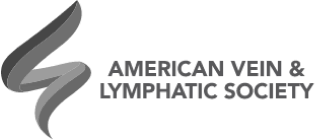
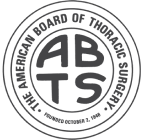
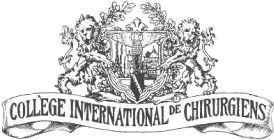
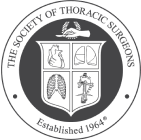
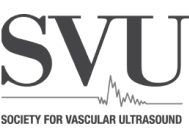

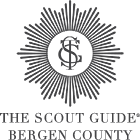








complete and thorough diagnostic testing
Healthy veins are essential to living. They work alongside our arteries to carry blood throughout the body and back to the heart. Our circulatory system does this a million times over in a lifetime. A healthy vein can easily manage the return of the blood back up to the heart against gravity through the use of one-way valves, but as we age, there is a decrease in our vein elasticity and the valves become ineffective. Blood begins to pool causing the vein to stretch and become swollen and knotted. When this happens, visible varicose veins appear.
At Chuback Vein Center, we provide complete and thorough diagnostic testing. With venous ultrasound, we can determine the extent of venous insufficiency and the necessary series of treatments you will need. In our state-of-the-art facility — conveniently located in Paramus, New Jersey — we offer several minimally invasive procedures that will treat your venous insufficiency without interfering with your everyday lifestyle. It is our goal to improve the health of your legs and restore the energy you almost forgot you once had!
A leader in the field of Vein Treatments
Approximately 20 to 30 million people in the United States suffer from venous disorders, and it affects people of all genders. Your veins rely on elastic walls and a series of small one-way valves to ensure blood travels towards the heart instead of pooling in your legs and ankles. Vein wall elasticity decreases as people age, increasing the chance of swollen, knotted varicose veins. Heredity, gender, and occupational requirements like having to stand for long periods of time can also contribute to this issue.
Vein disease has a strong genetic link and tends to run in families. Women are more likely to develop varicose veins due to hormones and the stress of pregnancy. Occupational requirements are also a big risk factor in the development of varicose veins. Without a healthy set of veins, your body cannot operate at its best. Therefore, it is extremely important to seek treatment. The most common underlying issue is called “Chronic Venous Insufficiency” or “CVI.” This condition occurs when the vein wall dilates and the valves stop working properly, leading to blood pooling in the legs. This is also known as venous stasis.
This can very often lead to bulging varicose veins, spider veins, and symptoms — including but not limited to heaviness, swelling, calf cramps, itching, and burning pain. While usually not life-threatening, venous disorders still affect your circulatory system and can lead to more serious complications. If left untreated, they may progress to ulceration and blood clots. Chronic venous insufficiency is a progressive medical condition that develops slowly over time. If left untreated, small spider veins can develop into bulging varicose veins that are associated with pain, swelling, and skin discoloration. Eventually, these symptoms can progress into venous stasis ulcers. Fortunately, there are a number of safe, effective, and virtually pain-free treatments available to address vein issues before complications occur.
Vein Treatments
Healthy leg veins contain one-way valves that allow blood to flow in only one direction, towards the heart. When someone suffers from chronic venous insufficiency, these valves no longer work properly, and the blood begins to flow backward away from the heart and pool inside the vein, causing them to "bulge" or "varicose.” There are a number of risk factors associated with varicose and spider veins. One or more of these factors have been shown to increase the risk of developing CVI or other indicators of varicose veins.
The most common contributing factor is heredity. If one parent has varicose veins, there is approximately a 50-60% chance you will too. If both of your parents have varicose veins, there is a 90% chance you will also suffer from venous insufficiency!
Gender also has a role to play. An estimated 50% of American women suffer from spider and varicose veins, while only 40% of the over-40 male population has venous disorders. Fortunately, these problems are easily treatable regardless of gender.
Greater vein disease susceptibility often corresponds with hormonal changes. Women are more likely to experience circulation issues during puberty, pregnancy, and menopause. Birth control pills, estrogen, and progesterone can also increase a woman’s risk.
Women who are pregnant are more likely to develop varicose veins, particularly during their first trimester. Hormone levels and blood volume increase during pregnancy, causing enlarged veins. The enlarged uterus can also increase pressure on the veins, further increasing a woman’s risk. Fortunately, most women find that their varicose veins improve within three months after giving birth, although, with successive pregnancies, abnormal veins are more likely to remain.
Aging, obesity, leg injury, and standing occupations can also predispose an individual to vein disease. Some of the most common occupations that are affected are teachers, hairdressers, medical personnel, and retail workers. People who are at risk should watch for bulging varicose veins on the legs, changes in skin color or texture, and swollen ankles.
Chronic Venous insufficiency can present in a number of different ways:
Chuback Vein Center
Millions of Americans experience unsightly and uncomfortable varicose veins every year. If the underlying issue is not treated, varicose veins and Chronic Venous Insufficiency may lead to serious complications, including difficult-to-treat leg ulcers and the development of deep vein thrombosis (DVT).
These symptoms can significantly decrease the quality of life. DVT is a clot that forms in a deep vein, usually the legs or pelvis. The condition can cause pain, swelling, redness, and enlarged veins, but it can be life-threatening if the clot detaches and travels through the bloodstream. If the clot reaches veins near the heart or lungs, it can stop blood flow and cause a pulmonary embolism or heart attack. If the clot makes it into the brain, it can lead to a stroke. DVT and related pulmonary emboli claim the lives of as many as 100,000 Americans each year.
There are many options for treating vein disease. Some are simply healthy changes to your lifestyle, while others involve outpatient surgery. Some of the treatments available through Chuback Vein Center include:
Paramus
Paramus vein doctor, Dr. John A. Chuback leads our team of board-certified vascular specialists who are ready to help you eliminate varicose veins and reclaim your healthy life. To speak with Dr. Chuback and learn more about how to prevent varicose veins, contact us today. You can call us at (201) 261-1772 or fill out our simple contact form on this page. We’ll schedule your appointment at our Bergen County medical facility and take the time to get to know you, as well as find answers to your questions about varicose vein consequences and treatments. Let us help you overcome the pain, swelling, and discomfort of vein disease and get back to your healthiest, happiest life!
Schedule ConsultationWe invite you to become a part of the Chuback Vein Center family. We are confident in our ability to restore your health and wellness.